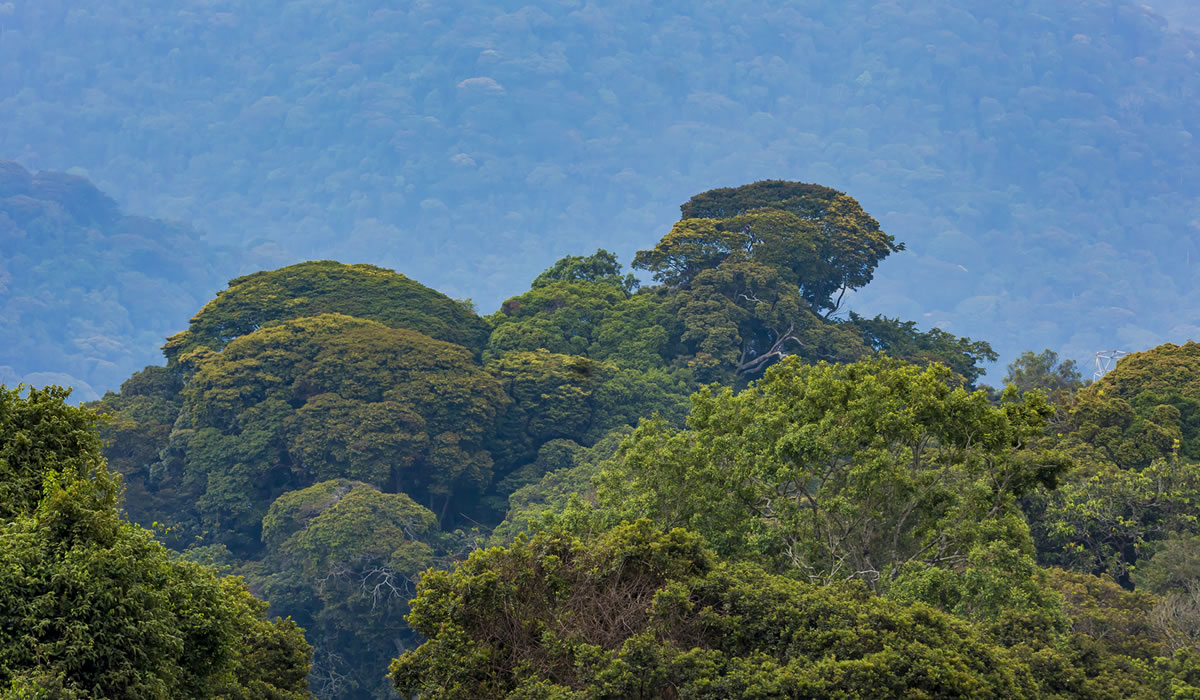Gishwati-Mukura National Park is one of Rwanda’s newest and most exciting conservation areas, a hidden gem that combines lush biodiversity, rich cultural history, and remarkable community-based conservation. Located in the western part of Rwanda, the park covers about 34 square kilometers and consists of two separate forests, Gishwati and Mukura, that together create a unique ecological corridor. Although smaller than other parks in Rwanda, Gishwati-Mukura is gaining international recognition for its remarkable primate population, diverse bird species, and its important role in environmental restoration. For travelers seeking an authentic, less-crowded experience, the park provides an opportunity to connect with nature while contributing to one of the most ambitious conservation success stories in East Africa.

The history of Gishwati-Mukura is a story of resilience and renewal. In the past, the forests faced severe degradation due to human settlement, deforestation, and agricultural expansion, particularly during the aftermath of the 1994 genocide when displaced people sought refuge in the area. What was once a vast tropical forest stretching over 1,000 square kilometers was reduced to small fragments. Recognizing the urgency to protect what remained, the Government of Rwanda and partners such as the Forest of Hope Association and the Rwanda Development Board began efforts to rehabilitate the area. In 2015, Gishwati-Mukura was officially gazetted as Rwanda’s fourth national park, joining Volcanoes, Akagera, and Nyungwe. This bold step signaled Rwanda’s dedication to restoring its ecosystems and promoting sustainable tourism.
The biodiversity of Gishwati-Mukura National Park is impressive given its size. The park is home to five primate species, with the eastern chimpanzee being the most notable. Chimpanzee trekking has become one of the park’s highlights, giving visitors the chance to track and observe these intelligent animals as they forage and interact in their natural habitat. Other primates include golden monkeys, L’Hoest’s monkeys, blue monkeys, and vervet monkeys, all of which can be seen during guided forest walks. The presence of golden monkeys, which are also found in Volcanoes National Park, adds extra value for tourists interested in rare primates.
Birdwatchers are also rewarded with a wealth of avian diversity in Gishwati-Mukura. The park boasts more than 230 bird species, including 20 Albertine Rift endemics that cannot be found outside this region. Some of the sought-after species include the Ruwenzori turaco, handsome francolin, strange weaver, and the dusky crimsonwing. The combination of montane forest and transitional habitats makes the park a hotspot for both resident and migratory birds, cementing its reputation as one of Rwanda’s best birding destinations.
Flora in the park is equally remarkable, with more than 60 species of trees identified in Gishwati alone. Visitors will encounter native hardwoods, bamboo, ferns, and medicinal plants that have been used by local communities for centuries. The park also features rare orchids and wildflowers that add vibrant color to the forest floor. This diverse vegetation not only provides shelter and food for wildlife but also plays a critical role in water conservation and soil protection for the surrounding landscapes.
Tourists to Gishwati-Mukura National Park can enjoy a range of activities designed to showcase its natural beauty and cultural heritage. Guided forest hikes are the primary way to explore the park, offering opportunities to spot primates, birds, butterflies, and unique plants. Chimpanzee and golden monkey tracking provide thrilling wildlife encounters, while longer hikes allow for a deeper immersion into the forest. Cultural experiences complement the natural attractions, with community-based tourism initiatives offering visitors the chance to learn traditional skills such as beekeeping, banana beer brewing, and handicraft making. These activities not only enhance the visitor experience but also ensure that local communities directly benefit from tourism, thereby reinforcing conservation efforts.
The conservation significance of Gishwati-Mukura cannot be overstated. The park serves as an ecological bridge between Nyungwe Forest in the south and Volcanoes National Park in the north, helping to restore connectivity for wildlife populations. This corridor is especially important for chimpanzees, whose long-term survival depends on large, connected habitats. Restoration programs, including tree planting and the removal of invasive species, are helping to rebuild the forest and create a healthy environment for both wildlife and people. Rwanda’s innovative approach to linking conservation with community development has made Gishwati-Mukura a model for other countries facing similar challenges.
Accessibility to Gishwati-Mukura is relatively easy, which makes it an attractive stop for travelers exploring Rwanda. The park lies about two hours from Kigali by road, and it is also conveniently located near Lake Kivu and the towns of Rubavu and Karongi. This allows visitors to combine a forest experience with relaxation along the lake’s scenic beaches or boat rides on its calm waters. For those on longer itineraries, Gishwati-Mukura can be included as part of a circuit that covers Volcanoes National Park for gorilla trekking, Nyungwe Forest for chimpanzees and canopy walks, and Akagera National Park for classic savanna safaris.
Accommodation options near the park are steadily growing as tourism develops. The Gishwati Lodge, managed by Wilderness Safaris, is the main luxury option and offers an intimate experience with breathtaking views of the forest. Guests here enjoy guided nature walks, primate tracking, and birding excursions, as well as community visits. In addition, mid-range and budget hotels are available in nearby towns such as Rubavu and Karongi, catering to different traveler needs. The small scale of tourism in Gishwati-Mukura ensures a personalized and low-impact experience that aligns with the principles of eco-tourism.
One of the park’s strongest appeals is its focus on sustainable tourism. Visitor numbers are kept relatively low, ensuring that wildlife is not disturbed and that the forest can regenerate. The Rwanda Development Board works closely with conservation organizations and local people to ensure that revenue from tourism supports both conservation programs and community projects. These include building schools, health centers, and water facilities, all of which improve the quality of life for people living around the park. This collaborative approach creates a strong incentive for local communities to protect the forest and its wildlife.
For travelers planning a visit, the best time to explore Gishwati-Mukura National Park is during the dry seasons, from June to September and from December to February. These months provide the most comfortable hiking conditions and better chances of wildlife sightings. However, as with any rainforest, visitors should be prepared for occasional rain at any time of year. The wet seasons from March to May and October to November make the forest lush and vibrant, providing excellent opportunities for birding and photography, though trails may be more slippery.
Gishwati-Mukura is not only a destination for tourism but also an important site for scientific research. Researchers continue to study its primate populations, birdlife, and forest regeneration processes, generating knowledge that informs conservation strategies. Visitors who choose to travel here become part of this bigger story, supporting the long-term survival of species and ecosystems that might otherwise have been lost. The park demonstrates how degraded landscapes can be restored and turned into thriving eco-tourism destinations that benefit both people and wildlife.
In comparison to Rwanda’s more famous parks such as Volcanoes and Nyungwe, Gishwati-Mukura offers a quieter, more off-the-beaten-path experience. The smaller size of the park makes encounters more intimate, while the combination of wildlife and cultural activities provides a holistic perspective on Rwanda’s natural and human heritage. Travelers looking for authentic experiences away from crowded tourist spots will find Gishwati-Mukura particularly rewarding.
In conclusion, Gishwati-Mukura National Park is a remarkable example of resilience, conservation, and community-driven tourism. It may be Rwanda’s newest national park, but it has quickly established itself as a destination worth visiting. From chimpanzee and golden monkey tracking to birdwatching, hiking, and cultural encounters, the park offers diverse experiences that highlight the country’s commitment to eco-tourism. Its role in forest restoration and wildlife protection makes it not only a travel destination but also a living conservation project. For travelers seeking meaningful adventures that support sustainability and connect them to nature, Gishwati-Mukura National Park is an ideal choice.
